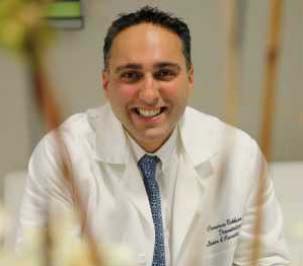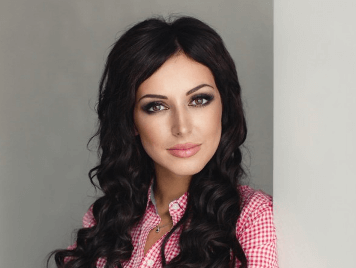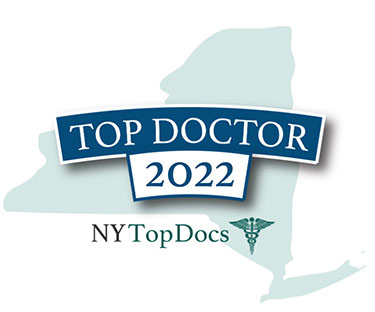Non-Surgical Eyebrow Lift in New York
LIfting the eyebrows without surgery is a popular treatment at the New York Cosmetic, Skin and Surgery Center. Dr. Rokhsar achieves beautiful results with injectables and lifting devices that can compare to traditional blepharoplasty1. Dr. Rokhsar is a Harvard educated, board-certified cosmetic dermatologist who serves as an Associate Clinical Professor of Dermatology at Mount Sinai Hospital. Dr. Rokhsar’s numerous Top NYC Doctor awards were given to him based on recommendations made by his peers.
Over time, the skin begins to loosen around our eyes. Combine this with long nights and early mornings, noisy kids or too much work and you definitely have a situation that calls for some intervention. Dark circles, sagging skin and drooping brows are all aesthetic characteristics that can make you look haggard, tired and even unfriendly. They change the way the world sees you and how you see yourself.
The procedure, created and administered by Dr. Rokhsar himself, combines Ultherapy and Botox injections:
Botox
- Botox is used in specific places underneath the brow to relax the muscles that pull the brow downward. When those muscles are relaxed, the brow becomes softer and more elevated.
- In some cases, Dr. Rokhsar will suggest fillers underneath the eyes to raise the skin and to fill areas that are depressed. This eliminates the shadows that cause dark circles under the eyes, creating more balanced contours.
Ultherapy
Ultrasound waves are transmitted to the foundation of your skin, going deeper than any laser treatment can. Ultherapy triggers a rejuvenating process to stimulate collagen and help lift droopy brows. This completely safe, FDA approved procedure literally renews your skin and tightens brows to give you a fresh look.
Why Choose Dr. Rokhsar’s Non-surgical Browlift?
- Only takes fifteen minutes for injectables and only slightly longer for Ultherapy
- In-office procedure
- No recovery period or downtime
- Minimally invasive
- Nearly painless
Eyebrow Lift FAQ
Is the non-surgical eyebrow lift much less effective than having surgery?
Not for people with mild signs of aging who have dark circles and fine lines. With continued use, the non-surgical eyebrow lift2 is very effective and continues to keep you looking rejuvenated! Those with severe signs of aging should perhaps opt for the surgical route if more dramatic results are required.
Is there any downtime for the non-surgical eyebrow lift?
There is zero downtime! In fact, you can walk out the door and continue with your day. There may be some soreness in the injection area but it is easily treated with Tylenol or cold compresses. On some occasions, there can be minor bruising or redness but this is minimized by icing the area before treatment.
What results can I expect from a non-surgical eyebrow lift with Dr. Rokhsar?
You can expect a subtle but noticeable change in your appearance. The brow will be more elevated by two to three millimeters and the skin underneath the eye will be fuller and more youthful. Your face will have a more relaxed and rested appearance. We know that your confidence will benefit from having this newfound freshness!
How is an eyebrow lift done?
There are various non-surgical options available for an eyebrow lift, including injectables and ultrasound technology. One non-surgical option is the use of neurotoxin injections such as Botox or Dysport to weaken the muscles that pull the eyebrow down, resulting in a lifted appearance. Another non-surgical option is the use of fillers, which can add volume around the eye and eyebrows and lift the brow. These fillers typically last up to a year, while the effects of botox and Dysport last 3-4 months.
Additionally, ultrasound technology named Ulthera or Ultherpy can also be used to revitalize and lift the brow without surgery. Ultherapy works by placing controlled zones of ultrasound energy into the desired area of the eyebrow lift. This ultrasound energy gets converted to heat which causes skin contraction. Ulthera technology provides minimal discomfort and can produce significant results.
Non-surgical options may not produce the same long-lasting results as surgical options, such as a traditional brow lift. However, they can be ideal for those who want to avoid the costs, risks, and long recovery times associated with surgery.
How to lift eyebrows with Botox?
Botox is a popular and effective non-surgical option for lifting eyebrows, reducing the appearance of wrinkles and lines, and achieving a more youthful, rejuvenated look. The treatment works by temporarily relaxing the muscles responsible for pulling down the eyebrows thereby releasing the pulling down effect, allowing the eyebrow elevator muscles to pull up the eyebrows more efficiently.
To lift eyebrows with Botox, the injections are typically placed slightly below and slightly outside the lateral aspect of the eyebrows. The number of units used and injection pattern may vary based on the patient’s individual anatomy and desired outcome. It is essential to go to a qualified and experienced board certified dermatologist who can assess your unique facial structure and create a personalized treatment plan to ensure the best possible results. Dr. Cameron Rokhsar is a double-board-certified Dermatologist and Dermatologic Surgeon and he is an expert injector. Dr. Rokhsar teaches at the Cosmetic Dermatology Clinic at Mt. Sinai Hospital where he trains other doctors how to properly inject Botox and dermal fillers.
While Botox can be an effective option for lifting eyebrows, it is essential to note that it is a temporary solution that typically lasts for three to four months. Patients will need to repeat the injections regularly to maintain the desired look. Additionally, it is important to understand that Botox cannot provide the same results as a surgical brow lift, which may be a better option for some patients with significant sagging or drooping.
How many units of Botox for eyebrow lift?
The typical range for a Botox brow lift is 2-5 units per side, with the lateral aspect of each eyebrow requiring 4-6 units. Patients may also need an additional 20-30 units of Botox for the glabellar area between the eyebrows, and 10-30 units for forehead lines.
Where to inject Botox for eyebrow lift?
One common area to inject Botox is the glabellar region, which is the area between the eyebrows where the “11” lines form when we squint. By relaxing the muscles in this area, the eyebrows can be lifted.
Another important area to target is the frontalis muscle, which controls movements in the upper face, including raising your brows. Injecting Botox into the medial aspects of this muscle will allow the lateral fibers to pull up the lateral eyebrow resulting in a lifted appearance.
Finally, injecting Botox into the tail ends of the eyebrows, in the orbicularis oculi muscle, can also help to neutralize the downward pull of the muscle, resulting in a lifted appearance. However, injecting Botox in this area requires a skilled injector like Dr. Rokhsar to avoid potential side effects such as eyelid ptosis.
How to correct Spock eyebrows after Botox?
Spock eyebrows, also known as Mephisto or Botox brows, refer to an exaggerated arch in the eyebrows that can occur after Botox injections. This occurs when the outside half of the forehead is over-treated, leading to an elevation of the lateral eyebrow.
To correct Spock eyebrows after Botox, the treatment generally involves waiting for 10-14 days for the effects of the botulinum toxin to take full effect before visiting your board certified dermatologist again. At that point, a few units of Botox can be injected in the frontalis muscle laterally, above the arched brow, to stop it from compensating and being overactive. Injecting the orbicular part of the orbicularis oculi muscle while avoiding injections at the levator palpebral muscle can also help adjust a heavy brow and prevent lid droop. Understanding anatomy and vectors is important when trying to prevent or adjust a Spock brow. This is why it is important to see a board certified dermatologist who is experienced in cosmetic dermatology. Dr. Cameron Rokhsar, a double board certified dermatologist and dermatologic surgeon, is a fellowship trained cosmetic and laser surgeon who teaches the cosmetic dermatology clinic at Mount Sinai Hospital in NYC as a professor. He is also a trainer for multiple companies including the maker of Botox, Dysport, Xeomin, and Jeuveau.
Call today for a consultation in our NYC or Long Island offices if you are looking for the best non-surgical eyebrow lift results.
New York Office Locations
Upper East Side Manhattan Office
121 East 60th Street, Suite 8AB New York, NY 10022
(212) 285-1110
Long Island Office
901 Stewart Ave, Suite 240, Garden City, NY 11530
(516) 512-7616
Request an Appointment
References
- What is a brow lift?. Available: https://www.plasticsurgery.org/cosmetic-procedures/brow-lift.
- Is It Possible to Get an Eyebrow Lift Without Surgery? Available: https://www.healthline.com/health/nonsurgical-eye-lift.



 Dr. Rokhsar was chosen by
Dr. Rokhsar was chosen by 






